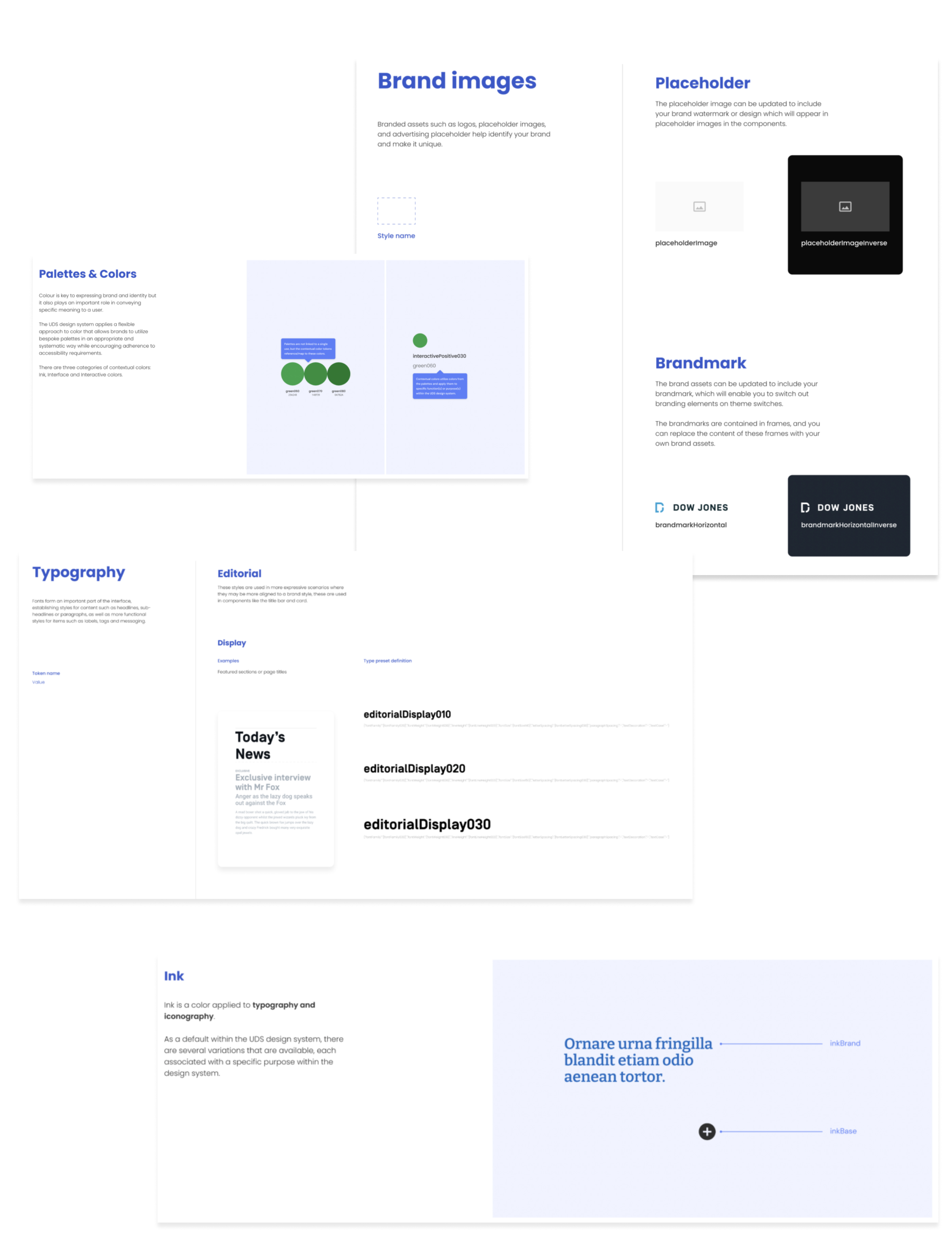Design System at Dow Jones
Overview

Dow Jones needed a unified, scalable design system to streamline multiple B2B and B2C brands, serving products from The Wall Street Journal to Factiva. The system was designed to enhance collaboration, accelerate delivery, and reduce inefficiencies, enabling ~60 full-time designers to efficiently reuse components while maintaining brand consistency. With 200K+ component references, it became a key asset in ensuring a cohesive, scalable design approach across Dow Jones platforms.
The Problem
Separate design approaches across brands caused inconsistencies, duplicated efforts, and inefficient workflows, leading to higher costs and slower product development.
Hypothesis
By adopting a token-first strategy and creating a unified design system, we could streamline processes, reduce redundancy, and ensure consistency across all brands. This approach would allow teams to customize branding with minimal effort, improve efficiency, and enhance collaboration, while ensuring compliance with EU and U.S. accessibility standards.
Role & Responsibilities
- Strategic Development: Co-managed the Dow Jones Design System as a scalable product, driving cross-brand adoption and ensuring seamless integration across B2B and B2C platforms.
- Bridging Design & Development: Facilitated cross-functional collaboration among 120+ designers, developers, and accessibility specialists, ensuring a unified and efficient workflow across teams.
- AI-Powered Optimization: Leveraged AI-driven tools to enhance documentation, analyze data, and automate workflows, improving overall efficiency in design and development.
- Team Leadership & Mentorship: Mentored and led designers, developers, and contractors, fostering a culture of collaboration, innovation, and continuous learning.
- System Scalability & Efficiency: Reorganized repositories and Storybook, refining the component library to reduce complexity by 20% and improve cross-brand consistency.
- Improved Communication & Productivity: Strengthened team coordination between design, development, and accessibility teams, leading to a 30% productivity boost.
Technologies
Figma - Git – React – SAFe - Design Tokens. – Jira – ChatGPT – Copilot – Vertex AI – Confluence
Output
- Optimized Component Library: Reduced library size by 20%, enhancing reusability and maintainability.
- 30% Productivity Boost: Strengthened cross-functional collaboration, reducing friction and improving output across teams.
- Increased Efficiency: Streamlined design and development processes, accelerating project timelines and reducing redundancies.
- Enhanced Brand Consistency: Achieved stronger visual coherence across all brands through standardized components and design tokens.
- AI-Driven Innovation: Improved decision-making and workflow efficiency through AI-powered documentation and automation.


